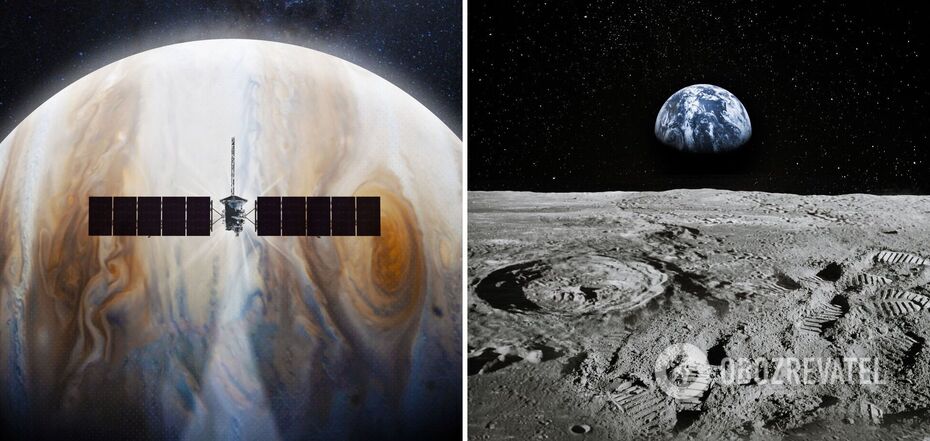News
Search for life on Europa and water on the Moon: six major space missions in 2024
The year 2023 was an outstanding one for space exploration in many ways - the samples of the asteroid Bennu delivered by NASA's OSIRIS-REx mission alone are worth a lot - so it's no surprise that expectations for 2024 are already somewhat high. And it seems that scientists will not let us down.
Ali Bramson, Associate Professor of Earth, Atmospheric and Planetary Sciences at Purdue University, spoke about the main space missions scheduled for launch in 2024. The results of some of them, however, will take years to come.
Europa Clipper
Around October 10, 2024, NASA intends to launch the Europa Clipper mission. Its goal is to explore one of Jupiter's largest moons, Europa.
This cosmic body is slightly smaller than the Moon, but it is very interesting to scientists because it probably hides a salty ocean under its icy shell, the volume of which exceeds all the oceans of the Earth combined. Even more interesting are the hints that Europa's ocean may be a suitable environment for extraterrestrial life.
As part of the mission, the spacecraft will fly by Europa nearly 50 times to study the ice shell, geology, and underground ocean. The mission will also look for active geysers erupting from Europa.
The big drawback is that Europa Clipper will arrive in the Jovian system only in 2030.
Launch of the Artemis II mission
The Artemis program is NASA's plan to return to the Moon. If all goes according to plan, the mission will send humans to the Moon for the first time since 1972. Subsequently, according to NASA's plan, the mission will create a kind of outpost on the Moon that will help with the future sending of people to Mars.
As part of the Artemis II mission, four astronauts will go on a 10-day flight around the Moon and back to Earth.
Currently, the launch is scheduled for November 2024, but there is a possibility of postponement to 2025, as there are doubts about whether all the necessary equipment, including spacesuits and oxygen equipment, will be ready.
VIPER will search for water on the Moon
Another NASA lunar mission. The VIPER rover will be used to explore the south pole of the Moon at the end of 2024.
The launch was scheduled for 2023, but the mission had to be postponed to complete additional tests of the lander developed by the private company Astrobotic.
On the Moon, the rover will look for volatiles - molecules that easily evaporate at lunar temperatures, such as water and carbon dioxide. They can then be used in future research on the Earth's satellite.
The VIPER mission will last 100 days. The launch and delivery of VIPER to the lunar surface is scheduled for November 2024.
Lunar Trailblazer and PRIME-1 missions
This is a paired NASA mission, which has a main vehicle and its companion that will be launched in pairs, which will save money.
Lunar Trailblazer, like VIPER, will search for water on the Moon. But, unlike VIPER, Lunar Trailblazer will investigate signs of water on the Moon while in orbit. It will measure the surface temperature and create a map of the location of water molecules across the surface of the Earth's satellite.
Lunar Trailblazer is projected to be ready for launch in early 2024, but it will have to wait for its main companion, the PRIME-1 mission, which is scheduled to launch in mid-2024.
PRIME-1 aims to test a lunar drill similar to the one that will be used later in the VIPER mission.
JAXA mission to explore the Martian Moon
But it's not just NASA that is flying into space. The Japan Aerospace Exploration Agency (JAXA) is developing a robotic mission called Martian Moon eXploration (MMX), which is scheduled to launch in September 2024.
Its goal is to explore the Mars moons Phobos and Deimos. In particular, to study their origin, as scientists are still arguing whether these Martian moons were asteroids captured by the planet's gravity or whether they were formed from debris already in orbit around Mars.
MMX is expected to spend three years around Mars, conducting scientific operations to observe Phobos and Deimos, and land on the surface of Phobos to obtain a sample before returning to Earth.
ESA's Hera mission
Hera is the European Space Agency's mission to return to the Didymos-Dimorphos asteroid system, which was visited by NASA's DART mission in 2022.
At that time, DART encountered Dimorphos to test a planetary defense method called kinetic strike. The mission was successful, as the space body changed its orbit.
Hera is expected to launch in October 2024 and reach Didymos and Dimorphos at the end of 2026, where it will study the physical properties of asteroids.
Earlier, OBOZ.UA told about the most interesting celestial events of 2024.
Subscribe to OBOZ.UA channels in Telegram and Viber to keep up with the latest events.



























